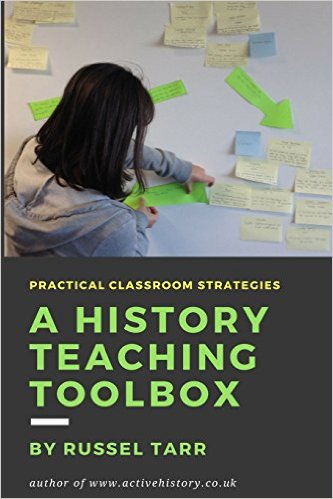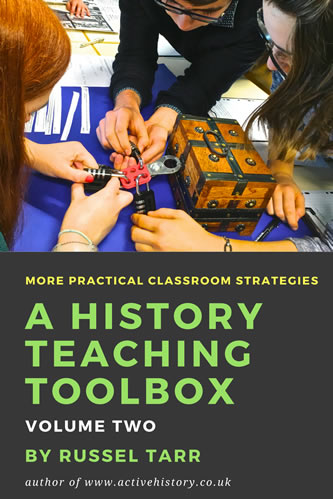A worksheet for A-Level / IB History providing long-term policy factors explaining Stalin’s rise to power.
Month: December 2007
Why did Hitler become Chancellor of Germany? – 2. Thinking Skills Exercise
Students turn their essay into a flowchart highlighting the essential links between the factors and the most important factual information that can be used to substantiate each factor.
The Tudors – Keyword Challenge
A new quiz for Year 8 history students.
Why did Hitler become Chancellor of Germany? – 1. Skeleton Essay Exercise
In this exercise, students are given three “skeleton essays”, each one of which puts forward a different interpretation of Hitler’s rise to power. Students read through each interpretation, choose the one they agree with most, and then elaborate on each section using their classroom notes. It provides an accessible way of showing students how the…
What was the most important cause of the Industrial Revolution?
This lesson follows on well from the studies of individuals. Students consider the big changes – transport, agriculture, smelting and so on – and try to link them together in a meaningful way [Part 1 | Part 2]
Causes of the Industrial Revolution
I have now added a new factual test to the popular “Horatio Ramsbottom: Victorian Entrepreneur” computer simulation. The game itself has also been expanded to include a new decision point relating to Brunel’s “Great Eastern” project.
Who was the most important person in the Industrial Revolution?
A balloon debate lesson plan and worksheet. Each student produces a single powerpoint slide as a key figure from the industrial revolution period explaining why “they” deserve to be remembered as the most important character overall. The debate which follows is a great way of encouraging students to link and prioritise different types of achievements.
Tsarist Russia Game – GE Tour / New Worksheet
I have updated the popular “Virtual Tour around Tsarist Russia” with a new worksheet and an improved Google Earth Tour.
Post It: Flash Labelling Tool
PostIt is a useful tool for helping students to identify and then categorise key factors. Each “Note” can be dragged and dropped anywhere in the screen and colour coded if necessary. A background image can also be inserted for annotation purposes.
Dustbin Game
A Dustbin game is great for helping students to organise ideas into categories. Students or teachers can create up to four categories of factors. The game created by ClassTools.net then involves students dragging and dropping each factor into its correct category as quickly as possible in a “race against the clock”!
Who was Jack the Ripper? – Simulation
Armed with the profiles that they have built up using the worksheet unit about Jack the Ripper, students go to this ActiveHistory Simulation which asks them a series of questions about what they think they now know about the personality and appearance of the Ripper. The computer then analyses their responses to present them with…
Medieval Religion – Quiz
A new quiz for Year 7 History students.

